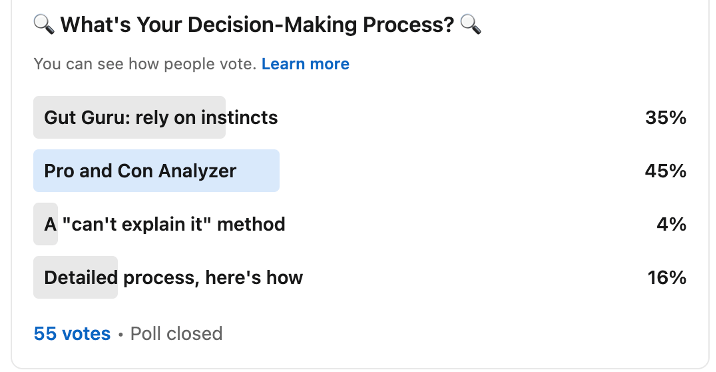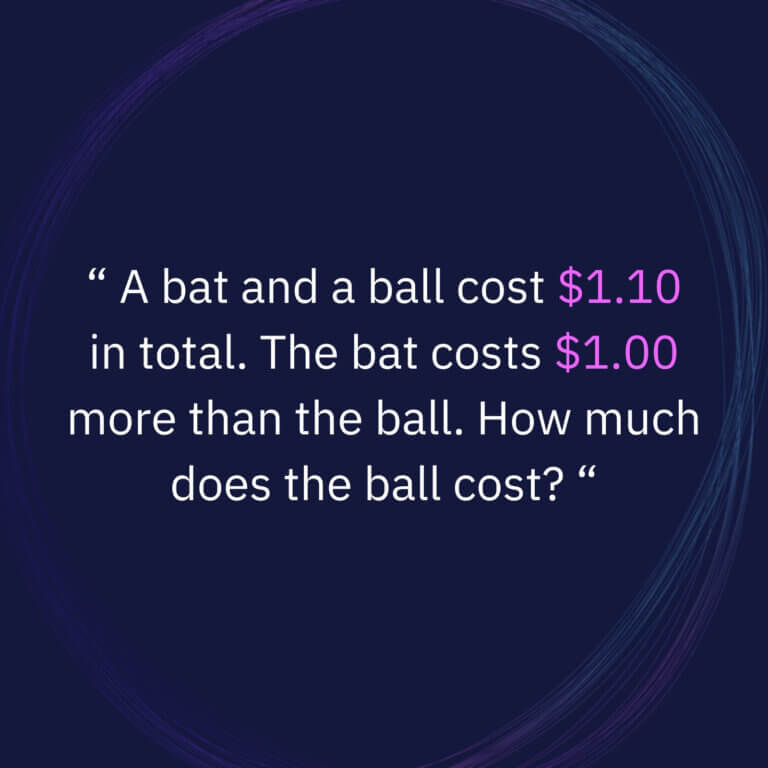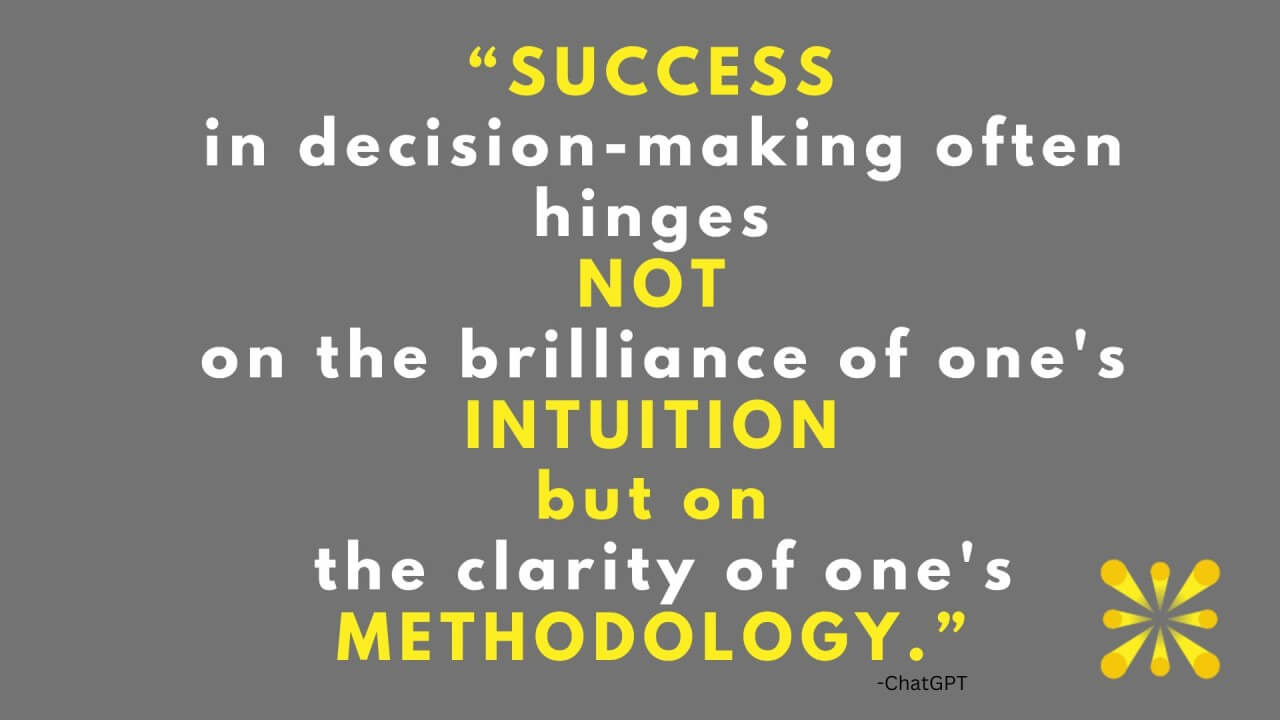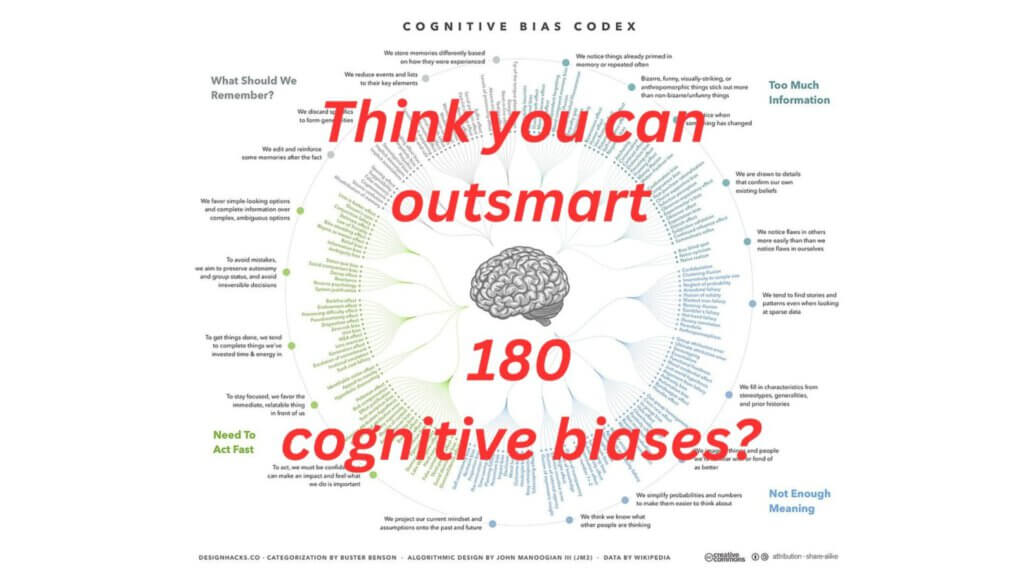I had a theory…..not enough people use a structured approach when making complex decisions.
I’ve observed this as an executive, as a consultant and as a coach. We are overconfident in our decision-making skills. And yet, how familiar are these scenarios to you
- A leader makes a major decision, and you can’t follow their reasoning.
- A team is divided between option A and option B, arguing back and forth.
- A colleague goes in circles, unable to pull the plug on a decision.
- A look back to a decision made wondering “Why wasn’t X, Y, Z considered?”
Without a systematic approach, and knowing which step to adjust for context and complexity, you make errors, you get stalled, or can’t influence those who need to follow you.
The lack of a structured approach is a major contributor to missed opportunities, difficulty in team collaboration, lower employee morale, a culture of mistrust and simply the many bad decisions we’ve all observed. Where
A simple (non-scientific by any stretch of the imagination) LinkedIn poll provided a “wind check” to my theory. In the post, I asked, “What is your go-to process for Complex decision making”. Here are the results.

Let me take you through why you should care about these results
What is a complex decision?
Complexity in decision-making arises when there is no straightforward or obvious choice, and the decision-maker must and uncertainties to determine the best course of action. In our fast-evolving new world, it’s not always obvious what the next steps are.
What is our brain’s ability to “grapple with various interconnected factors”?
Not very well. Our brain’s processing skills are limited and flawed. When the cognitive load is too much, we will unconsciously resort to shortcuts and biases to help us through.
- Individuals have limited cognitive capacity to process information and make decisions – Herbert Simon, Nobel laureate, on his Bounded Reality work.
- Individuals often rely on intuitive judgments rather than systematic analysis leading to predictable errors in decision-making – Kahneman and Tversky, on their Judgment under Uncertainty: Heuristics and Biases work.
I don’t fall into those traps; my gut instincts have been tailored with years of experience and knowledge!
Here is a little riddle for you

Your gut instinct said $0.10 right? It’s wrong. And 50% of MIT students, with lots of experience and knowledge in math, got this wrong as well. (Answer here)
Daniel Kahneman demonstrated that we have two systems of thinking. System 1 is the automatic yet often erroneous system and system 2, is the systematic and more accurate. We over-rely on system 1 thinking.
How many $0.10 decisions are done every day? What’s the impact?
I don’t rely on my gut; I use a process! The pro/con analysis.
I’m sorry to tell you that this process is also flawed for complex decision-making.
The pro/con analysis is typically looking at binary choices. Herbert Simon demonstrated that binary choices may oversimplify complex problems, leading to suboptimal decisions. Studies have shown that presenting choices in a binary format (e.g., yes/no, Option A or B) can lead to different decisions compared to framing them in a broader context or with alternative options.
And bias is still introduced. Decision-making expert Annie Duke said that “a pros and con list is a “bias amplifier;” one that allows you to game which option looks best when making the list”
Why do I need to improve my decision-making process? It has served me just fine thank you very much.
Up to now. It’s served you UP UNTIL NOW. How will it continue to serve you in the era of AI?
As humans, we want to retain control, oversight and ethical guidance over AI Systems. While AI will process data and provide insights, it’s humans that will program the inputs, interpret the outputs, assess their implications and make informed choices that align with ethical values and societal goals.
Do we want to be making these decisions with a known flawed approach?
Have I convinced you? So, what’s next?
It’s a question of optimizing your decision-making processes.
- Master the Decision Matrix Process. Understand the systematic decision-making process and which levers you can push/pull to adjust for context and complexity.
- Manually activate System 2 thinking. System 1 thinking will always overtake and when it does, think to yourself “How much impact does this 0.10 decision have?” to force a structured approach.
- Accept that to be human is to be biased. Learn all the ways we are naturally biased and develop mitigation techniques.
- Refine your judgment. When faced with a complex decision, start with your gut response, go through a structured analysis, and review what gap may have existed in your gut. Regularly look back at past decisions for fine-tuning.

Impro Performance Strategist










